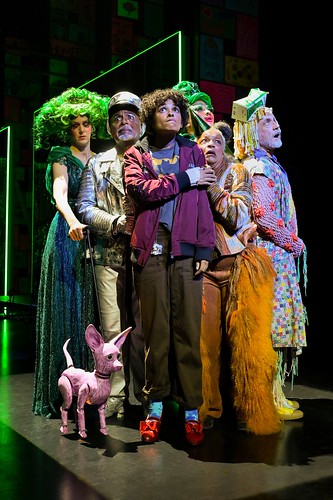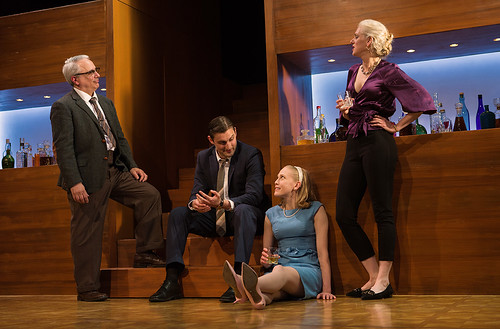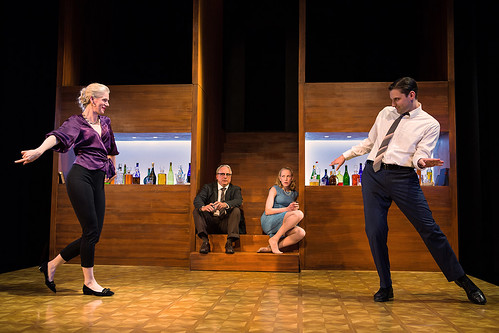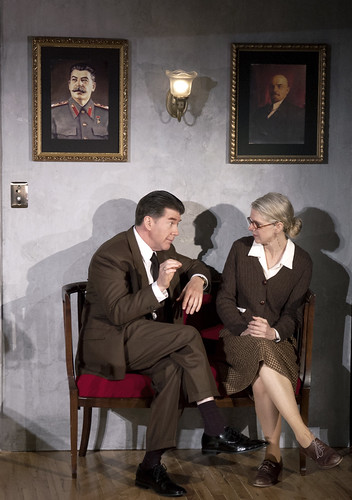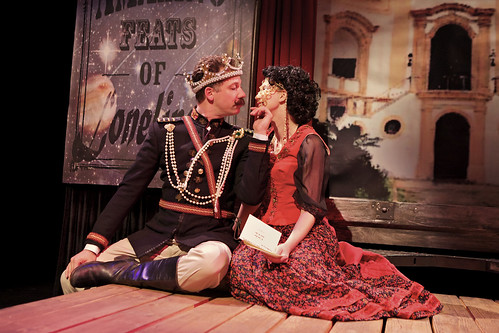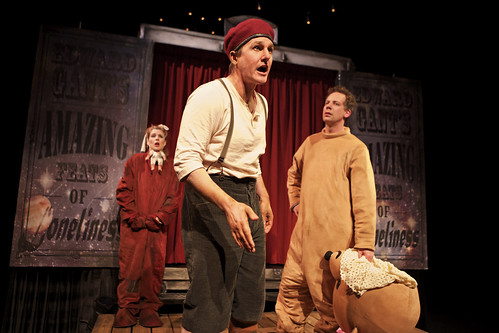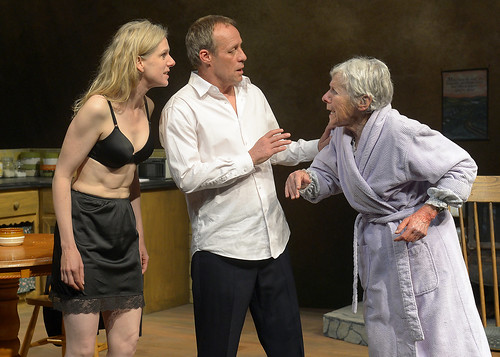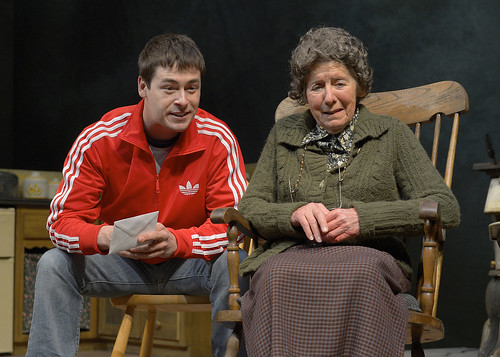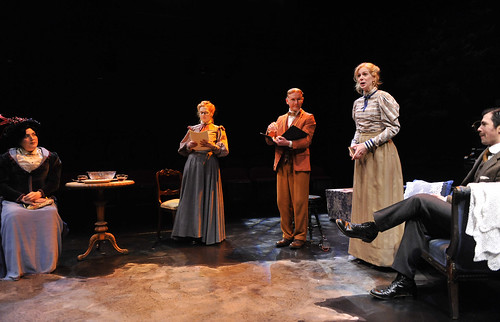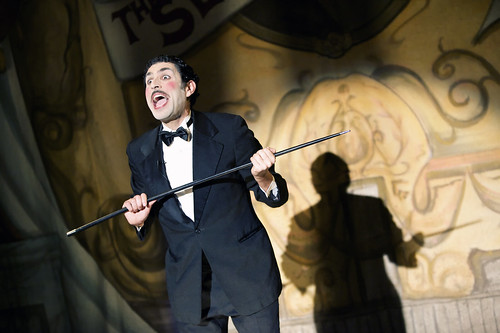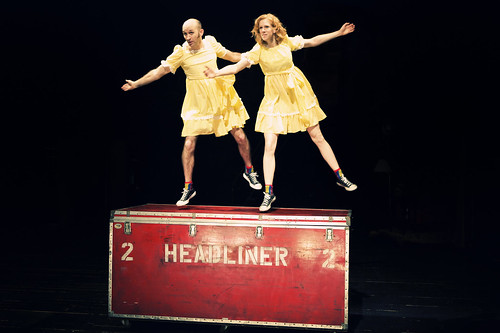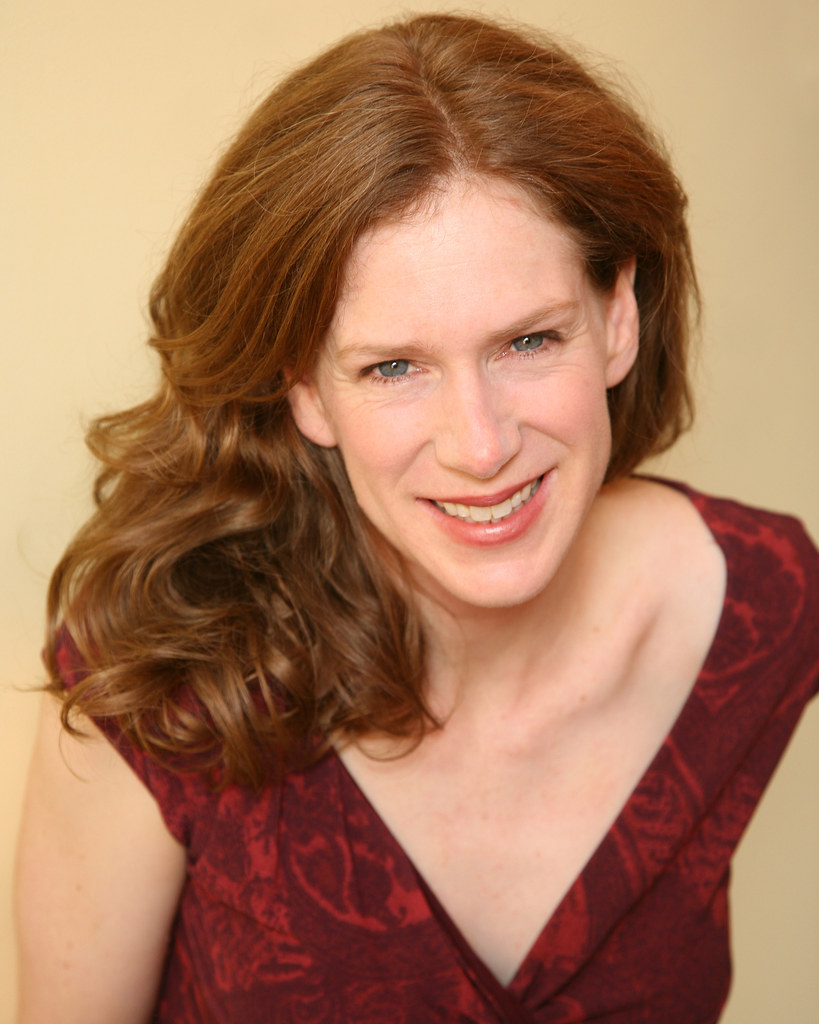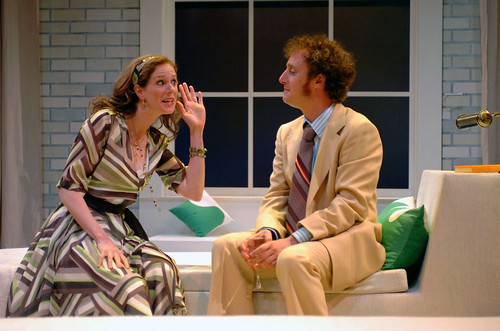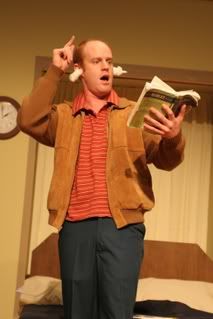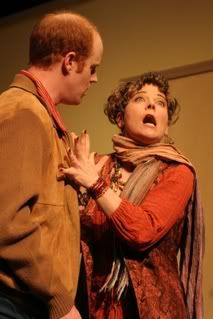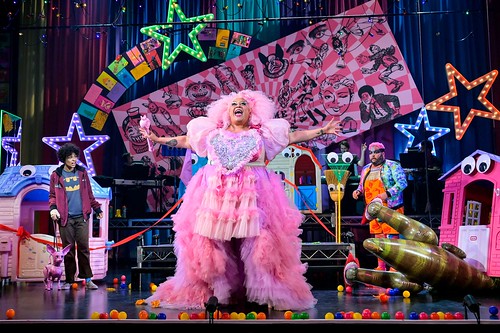
ABOVE: Katrina Lauren McGraw (center) is Glinda, Chanel Tilgham (left) is Dorothy and Travis Santell Rowland is part of the lively ensemble in the American Conservatory Theater production of The Wizard of Oz. BELOW: Attempting an audience with the great and powerful Wizard of Oz are (from left) Beth Wilmurt (Ozian), Darryl V. Jones (Tin Man), Tilghman (Dorothy), El Beh (Guard), Cathleen Riddley (Cowardly Lion) and Danny Scheie (Scarecrow). Photos by Kevin Berne
We’re all friends of Dorothy now. At least that’s what if feels like in American Conservatory Theater’s Pride Month production of The Wizard of Oz now at the Toni Rembe Theater. Part Pride Parade, part homage to the 1939 movie, part glam rock/glitter grunge dime store spectacle, this Oz has a lot going on, including a lengthy running time that inches toward three hours.
Director/choreographer Sam Pinkleton throws abundant ideas into this well-loved, well-worn tale of Dorothy Gale and her trip over the rainbow – some are clever and exciting, others are not. The intention seems to be a homegrown Oz that feels rooted in San Francisco history, with a special interest in LGBTQ+ activism, Summer of Love hippy vibes and queer culture evocation. This may be a story that begins in Kansas, but it ends up in a fantasy world where the Wicked Witch of the West is like a country-western Karen, the Wizard feels like a Ziggy Stardust-era Bowie and Dorothy is a sweetly nondescript teenager in a Batman t-shirt. There’s even (at least on opening night) an appearance by the San Francisco Lesbian/Gay Freedom Band marching across the stage.
It feels like Pinkleton wants to whip up a tornado of fun – a new, slightly edgier take on a beloved story but told with just enough sincerity and heart to keep the traditionalists (reasonably) happy. The tornado, for instance, is now a dance piece in which ensemble member Travis Santell Woland wears football shoulder pads from which dangles a dense fringe of plastic caution tape and spins around the stage. There are tall fans, tossed confetti, a Twister game mat (very funny) and a lot of chaos, but not much storytelling about where Dorothy is in all of this. We know where she is because this story is in our DNA at this point, but the stage is more confusing than it needs to be.
There’s also a unique solution to the yellow-brick road. We never actually see it, but whenever the gang is “off to see the Wizard,” audience members wave the yellow paper napkins they find in their programs.
Set and costume designer David Zinn is clearly having fun with a non-traditional Oz. There are tinsel curtains aplenty, mirrors and multicolored Christmas lights. The challenge of Munchkinland is cleverly addressed (mostly with household objects and googly eyes), and when there’s a need for flashy costumes, like for Glinda (a marvelous Katrina Lauren McGraw in a cloud of pinks) or for residents of the Emerald City, Zinn delivers with some genuine glamor. His costumes for Dorothy’s trio of fellow travelers focus on the humans rather than the creatures. Danny Scheie as the scene-stealing Scarecrow, is outfitted in hippy-ish crochet and a hat that’s actually a crushed milk carton. Darryl V. Jones as the Tin Man might be confused for a leather daddy if leather came in silver. And Cathleen Riddley as the Cowardly Lion is less predator and more teddy bear with a tail.
The sound of the show also takes a turn from the traditional, and in place of the lush MGM orchestrations for the classic Harold Arlen/E.Y. Harburg score, we have electronic sounds as if from the early days of the Moog synthesizer. But when Chanel Tilghman’s Dorothy offers her lovely take on “Over the Rainbow,” we get cast members augmenting the on-stage five-piece band with cello, ukulele, violin and a surprise woodshed tool (that also happens to be surprisingly beautiful). I was kind of hoping at some point all that chilly electronica would erupt into a disco dance party, but that never really happens, although our time in Munchkinland comes close.
Working from a faithful 1987 stage adaptation of the movie by John Kane for the Royal Shakespeare Company, Pinkleton’s Oz feels less like an archetypal journey and more like an intermittent drag cabaret performed on the smaller proscenium with in the proscenium. I have to admit that as an adult, I find the plot rather tedious, and although this crew is exceptionally lively, I still found myself anxious to get to the “ignore that man behind the curtain” moment. There is surprising poignancy as Dorothy bids her Oz friends goodbye, but that may be borne more from familiarity than any deep feeling the production has earned.
Pinkleton throws a lot at this wizardly wall to see what might stick, and in the end, not much really does. It’s a vessel we all know and love dressed up and enlivened in some interesting ways, but once we’re back in Kansas, the memory of the dream feels disappointingly hollow. This Oz is fun. It’s fresh. But it’s ultimately frustrating.
FOR MORE INFORMATION
American Conservatory Theater’s The Wizard of Oz continues through June 25 at the Toni Rembe Theater, 415 Geary St., San Francisco. Running time: 2 hours and 40 minutes (including one 20-minute intermission). Tickets are $. Call or visit act-sf.org.

